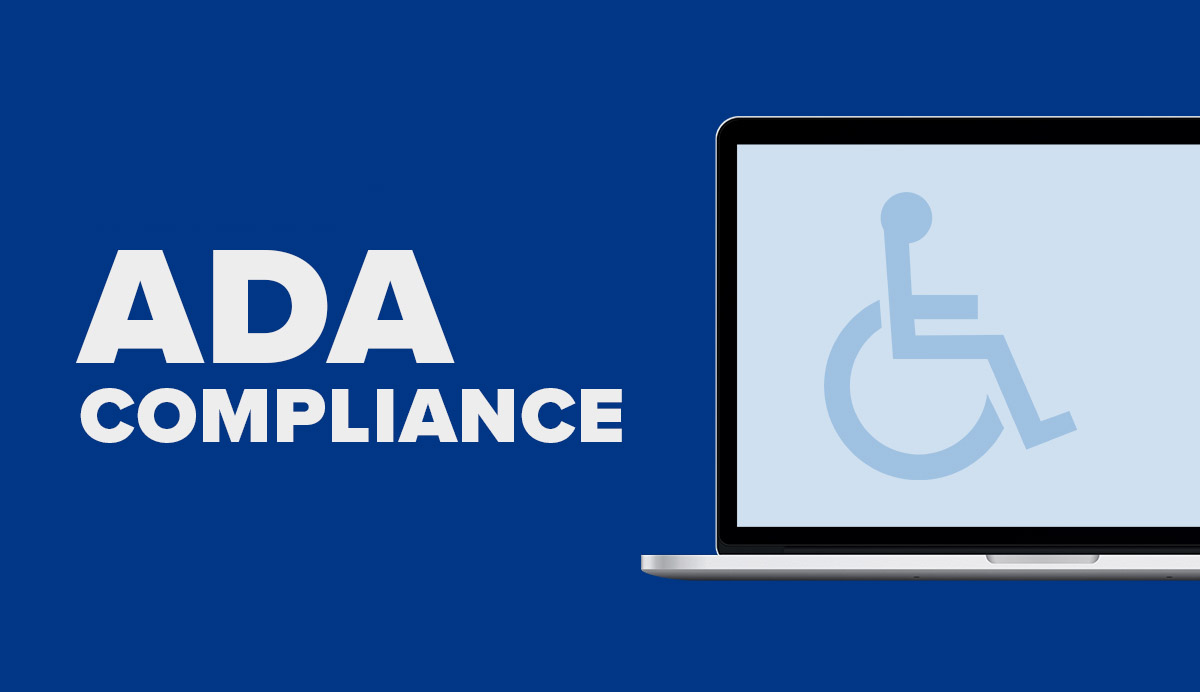When the Americans with Disabilities Act (ADA) was introduced in 1990, the internet was still relatively new. And while public buildings and businesses serving the public became legally required to accommodate people with disabilities, websites did not exist yet. In fact, the first website ever launched wasn’t until August 6, 1991. Fast forward to the present and both the ADA, which is now entrenched in public and business life, and the internet have evolved to keep pace with technology and modern society.
While website ADA compliance is still a murky legal area, not having a site that is fully accessible by all people is risky business. Website accessibility lawsuits have become more common, can be very costly, and can have a negative impact on a brand. ADA compliance is now a serious consideration for businesses and web developers, and is integral to web design.
So how can you be assured your site is ADA compliant? We recommend working with an experienced and knowledgeable web developer. You can also check out the Web Content Accessibility Guidelines (WCAG), which offer an in-depth overview. To help you out, here are some common issues and solutions.
Common Problems & Solutions in Website Accessibility
Not everyone sees and accesses a web page in the same way. Accessible website design takes these differences into consideration, relying on several components that work together to remove unnecessary barriers. Some of these components include
- Web content: text, images, forms, and multimedia, as well as any markup code, scripts, applications.
- User agents: software used to access web content, including desktop graphical browsers, voice browsers, mobile phone browsers, multimedia players, plug-ins, and some assistive technologies.
- Authoring tools: software or services used to produce web content, like code editors, document conversion tools, content management systems, blogs, database scripts, and other tools.
Some common issues that are often overlooked but can pose a real barrier to people with disabilities include the following:
Images Without Text Equivalents – People with impaired vision often rely on assistive technologies to help them access the information displayed on a web page. Because these assistive technologies are unable to interpret photographs, charts, color-coded information, or other graphic elements on a webpage, a person with impaired vision may not be able to discern what is being displayed.
Solution: Add a text equivalent to every image. This can also have the added benefit of helping with SEO.
Image-Based Documents – Image-based documents, like PDF’s pose a particular challenge for anyone using a screen reader, text enlargement program, or different font or color settings.
Solution: Provide an alternate text-based format.
Specific Colors and Fonts – People with impaired vision do not see web pages the same as everyone else. Some may only see a portion of the page at a time, others may not see colors the same or can only see specific colors on a computer screen, and still others are unable to see text if it is too small. For these reasons, people with visual impairments will often use specific font and color settings on their computers—settings that are different from what the majority of us use. If a site has been designed in a way that changing the color and font settings is impossible, the site becomes inaccessible to the visually impaired.
Solution: Avoid mandating specific colors and font settings, and allow the site visitor to specify what works best for their vision.
Multi-Media – While video is widely used online for delivering information from ads, to news to training, videos can pose a significant barrier to people with hearing and/or visual disabilities.
Solution: Support videos with an audio description and captions.
In addition to these common barriers, other considerations to aid in website ADA compliance include:
- Skip navigation link at the top of webpages to allow screen readers to skip directly to webpage content
- Descriptive HTML tags for online forms
- Minimal flashing, blinking or otherwise distracting features
- Visual cues for audio that plays automatically
- Static versions of pages that auto-refresh or require a timed response
- Titles, headings and subheadings on complex pages
Good ADA Design is also Good Web Design
Aside from the obvious legal benefits, ensuring your website is ADA compliant makes good design sense. After all, the ultimate goal is for site visitors to have a positive experience interacting with your company and your brand, easily access the information they are seeking (and you want to deliver), and be able to take action on your site. Place an order, request an appointment, make a reservation, etc. ADA compliance improves that experience and increases the usability of your site for people with disabilities—or without!
ADA compliance also improves SEO effectiveness. Search engines have become highly sophisticated at crawling pages, but they still do not “read” images. Including alternative image text and video transcripts, that are essential for people using screen readers, also provides additional content for search engines.
Compliance is an Ongoing Effort
Technology will continue to evolve, tools to enhance accessibility will continue to improve and the internet will continue to expand. The next generation of users will also be different from today. To stay in compliance, heck to stay relevant, websites must also continue to evolve. Fresh content, streamlined navigation, simplified tools and ease of access—these are the key components to ADA compliance, as well as positive user experiences and higher conversion rates.








